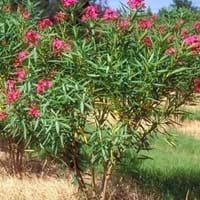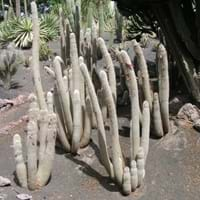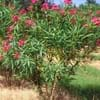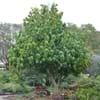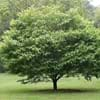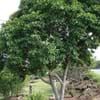Life Span
Perennial
Perennial
Type
Flowering Plants, Shrub
Cactus
Origin
Southwest Asia
Central America, South America, Brazil
Types
Calypso, Petite Salmon, Petite Pink
Not Available
Habitat
dry rocky watercourses, Riverbanks
Desert, Temperate Regions
USDA Hardiness Zone
9-11
12-15
AHS Heat Zone
Not Available
12-10
Sunset Zone
Not Available
12, 13, 21, 22, 23, 24
Habit
Bushy, Evergreen
Upright/Erect
Flower Color
Cream, Creamy Yellow, Pink, Purple, Red, White
Red, Orange, Salmon
Flower Color Modifier
Bicolor
Not Available
Fruit Color
Non Fruiting Plant
Not Available
Leaf Color in Spring
Dark Green
Not Available
Leaf Color in Summer
Dark Green
Not Available
Leaf Color in Fall
Dark Green
Not Available
Leaf Color in Winter
Gray Green
Not Available
Leaf Shape
Long linear and narrow
Succulent
Plant Season
Fall, Spring
Spring, Summer, Fall, Winter
Sunlight
Full Sun, Partial shade
Full Sun
Growth Rate
Medium
Not Available
Type of Soil
Marshy ground, Well drained
Loam, Sand
The pH of Soil
Neutral, Slightly Alkaline
Acidic, Neutral, Alkaline
Soil Drainage
Well drained
Well drained
Bloom Time
Summer
Spring, Summer
Tolerances
Drought
Drought
Where to Plant?
Ground, Pot
Container, Ground, Pot
How to Plant?
Layering, Seedlings, Stem Planting
Seedlings, Stem Cutting
Plant Maintenance
Low
Medium
Watering Requirements
Water less during winter, Water more in summer
Reduce watering in winter
In Summer
Lots of watering
Lots of watering
In Spring
Moderate
Moderate
In Winter
Average Water
Average Water
Soil pH
Neutral, Slightly Alkaline
Acidic, Neutral, Alkaline
Soil Type
Marshy ground, Well drained
Loam, Sand
Soil Drainage Capacity
Well drained
Well drained
Sun Exposure
Full Sun, Partial shade
Full Sun
Pruning
Prune in the late winter or spring, Remove shoots
No pruning needed, Remove damaged leaves, Remove dead branches, Remove dead leaves
Fertilizers
All-Purpose Liquid Fertilizer, fertilize every 2-3 weeks while growing, Fertilize in early spring, Potassium
Fertilize the soil before planting, slow-release fertilizers
Pests and Diseases
Leaf spot, Mealybugs, Red blotch, Red spider mite, Scale, Scale insects
Bacterial Stem Rot, fungus, Mealybugs, Spider mites
Plant Tolerance
Drought
Drought
Flower Petal Number
Single
Single
Foliage Texture
Medium
Bold
Foliage Sheen
Matte
Not Available
Attracts
Mealybugs, Not Available
Hummingbirds
Allergy
Phytodermatitis, Rash, Toxic
Not Available
Aesthetic Uses
Cottage Garden, Showy Purposes, Used in parkland
Landscape Designing, Showy Purposes, Wild gardens
Beauty Benefits
Not Available
Not Available
Environmental Uses
Air purification
Air purification
Medicinal Uses
Asthma, Cancer, Cardiotonic, Diabetes, epilepsy, Scabies
No Medicinal Use
Part of Plant Used
Flowers, Leaves
Whole plant
Other Uses
Used as Ornamental plant
Florist trade and landscaping, Used as Ornamental plant
Used As Indoor Plant
No
No
Used As Outdoor Plant
Yes
Yes
Garden Design
Not Available
Container, Houseplant, Rock Garden, Wall
Botanical Name
Nerium
Cleistocactus strausii
Common Name
Oleander, Nerium Oleander
silver torch or wooly torch
In Hindi
ओलियंडर
Cleistocactus strausii
In German
Oleander
Cleistocactus strausii
In French
laurier-rose
Cleistocactus strausii
In Spanish
Adelfa
Cleistocactus strausii
In Greek
Πικροδάφνη
cleistocactus strausii
In Portuguese
oleandro
Cleistocactus strausii
In Polish
Oleander
cleistocastus strausii
In Latin
Cleander
Cleistocactus strausii
Phylum
Magnoliophyta
Magnoliophyta
Class
Magnoliopsida
Magnoliopsida
Order
Gentianales
Caryophyllales
Family
Apocynaceae
Cactaceae
Genus
Nerium
Cleistocactus
Clade
Angiosperms, Asterids, Eudicots
Angiosperms, Core eudicots, Eudicots
Tribe
Wrightieae
Trichocereeae
Subfamily
Apocynoideae, Hippocastanoideae
Cactoideae
Number of Species
Not Available
Not Available
Importance of Oleander and Cleistocactus Strausii
Want to have the most appropriate plant for your garden? You might want to know the importance of Oleander and Cleistocactus Strausii. Basically, these two plants vary in many aspects. Compare Oleander and Cleistocactus Strausii as they differ in many characteristics such as their life, care, benefits, facts, etc. Every gardener must at least have the slightest clue about the plants he wants to plant in his garden. Compare their benefits, which differ in many ways like facts and uses. The medicinal use of Oleander is Asthma, Cancer, Cardiotonic, Diabetes, epilepsy and Scabies whereas of Cleistocactus Strausii is No Medicinal Use. Oleander has beauty benefits as follows: Not Available while Cleistocactus Strausii has beauty benefits as follows: Not Available.
Compare Facts of Oleander vs Cleistocactus Strausii
How to choose the best garden plant for your garden depending upon its facts? Here garden plant comparison will help you to solve this query. Compare the facts of Oleander vs Cleistocactus Strausii and know which one to choose. As garden plants have benefits and other uses, allergy is also a major drawback of plants for some people. Allergic reactions of Oleander are Phytodermatitis, Rash and Toxic whereas of Cleistocactus Strausii have Not Available respectively. Having a fruit bearing plant in your garden can be a plus point of your garden. Oleander has no showy fruits and Cleistocactus Strausii has showy fruits. Also Oleander is flowering and Cleistocactus Strausii is flowering. You can compare Oleander and Cleistocactus Strausii facts and facts of other plants too.
